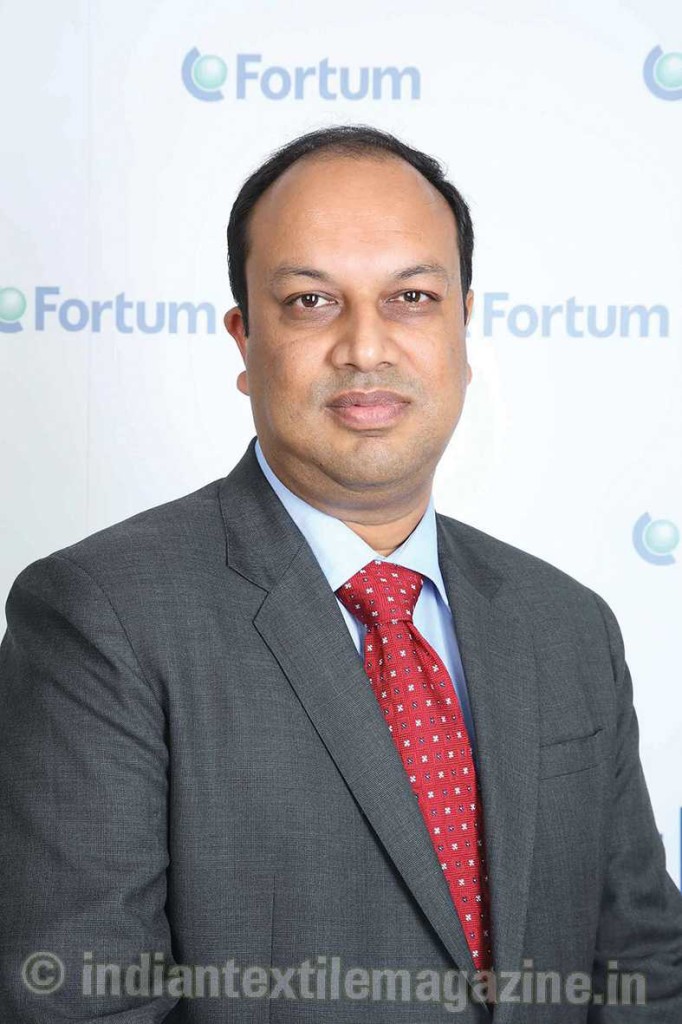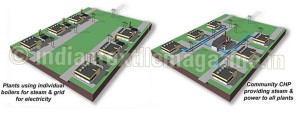Several Indian companies are major beneficiaries
The textile industry is struggling with poor infrastructure, especially endemic black-outs. Such power shortage reduces the average output by about five per cent. Hence, energy management and its efficient use are central to the industry, not only to bridge the gap between demand and supply of energy in the economy but also to achieve better returns. In this context, the technology that ensures optimal use of the resources for communities is Combined Heat and Power or CHP.

Mr. Vickram has been with the power sector all through his career and has more than 19 years of experience in this sector. He holds a B.Tech Degree in Electrical and Electronics Engineering from Karnataka University.
During his career he has been associated mainly with the co-generation systems, power plants, power, oil and energy derivatives and has had thorough exposure to marketing, strategic planning, P&L management, performance monitoring and measurement, planning, and risk management.
Mr. Vickram has in-depth knowledge of the power sector and knows the captive power plant needs and emerging trends. He is credited with conceptualizing many power plants which have become the industry benchmark, thereby helping the company he worked in to emerge an industry leader in India.
Fortum, a Euro 6. billion Finnish company, is specializing in offering CHP solutions. We spoke to Mr. Vickram Jadhav, Vice President, Fortum India, to know more about the company’s plans for the Indian market.
Can you a give a brief on Fortum and the solutions you offer?
Fortum is a Finland-based utility company with 51 per cent Finnish Government stake, stock listed as the largest utility company from Finland. Fortum’s purpose is to create energy that improves life for present and future generations. Catering to the versatile needs of our customers, we generate, distribute and sell electricity and heat, and offer related expert services. Our operations focus on the Nordic and Baltic countries, Russia and Poland, and now India.
Fortum generates electricity and heat in an environmentally benign manner using different energy sources. The company has energy production in the Nordic countries, Russia, Poland, the Baltic countries and Great Britain. Its investment programme covers nuclear and hydropower refurbishments and new combined heat and power (CHP) plants. In many of our research and development projects we are also studying the potential of new forms of renewable energy production, supporting our vision of the future energy system – Solar Economy.
Which are the major industry verticals you cater to and how important is the textile industry vertical for Fortum?
CHP holds significant importance to Fortum owing to industrial pollution reaching the critical level. We have been studying industrial clusters comprising industries such as Textile, Pharma and Chemical. These industries require uninterrupted steam and power at competitive prices to sustain their operations.
Fortum’s CHP concept can bring several benefits to the textile industry, in terms of secure supply of steam and power. Fortum’s CHP competence allows for very high primary fuel efficiency and also the use of a wide range of fuels.
Since how long has Fortum been in the Indian market?
We, at Fortum, see India as a market with potential owing to its geographical location and high energy requirements. We entered India in 2012 to address its need for sustainable power and steam generation, through utilizing local resources with high efficiency and low emissions.
Fortum’s immediate priority is to assess investment opportunities in CHP plants to provide utilities for industrial clusters. In addition to CHP, Fortum also focuses to create strong portfolio for solar and hydro in the Indian eco-system.
What is the solution you offer for the textile industry in India?
The Indian textile industry is struggling with poor infrastructure, especially endemic black-outs. Such power shortage reduces the average output by about five per cent. Hence, energy management and its efficient use are central to the industry, not only to bridge the gap between demand and supply of energy in the economy but also to achieve better returns.
In this context, the technology that ensures optimal use of the resources for communities is CHP.
In the textile industry, electricity, steam and heat represent the key elements in the business process. These elements need to be reliable, uninterrupted and cost effective. This is where we, with technology leadership proven elsewhere in the world, come in with our CHP expertise and help the textile industry to continue its significant contribution to the Indian manufacturing success.
Are you already working with any of the textile companies in India?
We are working with several textile companies within the industrial clusters where we are developing our projects. The supply of steam and power are the solutions proposed to them.
Based on our experience, we can state that CHP improves fuel efficiency of energy production from typical 35-40 per cent in conventional thermal production to as high as 90 per cent in CHP production. Increased efficiency of primary energy utilization decreases the amount of fossil fuel consumed per unit of energy produced and reduces the total air emissions. For example with particulate emission and SO2 the decrease is considerable with more than 70 per cent reduction compared to the conventional model with separate production of power and steam.
Have you done any study on the potential savings in heat and power which is possible for companies in India by adopting your solutions?
The savings will vary depending on the States in which these customers operate. However, today, these industries face several challenges due to the highly polluted eco-system they operate in, which results in intermittent closure, restrictions in scaling up operations and large footprint to house the utlity set-up.
Fortum’s CHP will help customers rationalize energy costs and free up space for expanding core business activities. Reliable steam and power will minimize unavailability costs, optimum and flexible steam offtake (against continuous operation of the boiler), remove all the hassles associated with individual boiler operations, minimize capital investments for the existing plant and planned expansions, ease up human resources to focus on the core product competencies and long-term insulation from stricter air pollution control regulations.
Combined heat and power plants can be tailored to suit local needs, allowing us to take advantage of local energy sources. But to make the most of what CHP can offer, we need to make changes to the way power is used and consumed in India.
Do you see an increasing opportunity for Fortum in India?
The concept of CHP is not new to India, but there is a need to have knowledge transfer from the global experts. We believe CHP compatibility allows for very high primary fuel efficiency and also the use of a wide range of fuels. And by locally centralizing the production of heat and electricity, and supplying industrial clusters, several benefits can be had for the industries and society as a whole.
Combined heat and power production in textile industrial clusters considerably increases the security of supply and reduces the need for very costly and mostly diesel-run, high emission back-up power or production losses due to industrial process failures.
We are focusing to increase awareness in the textile industry, and the industry is opening up towards adoption of CHP technology.
